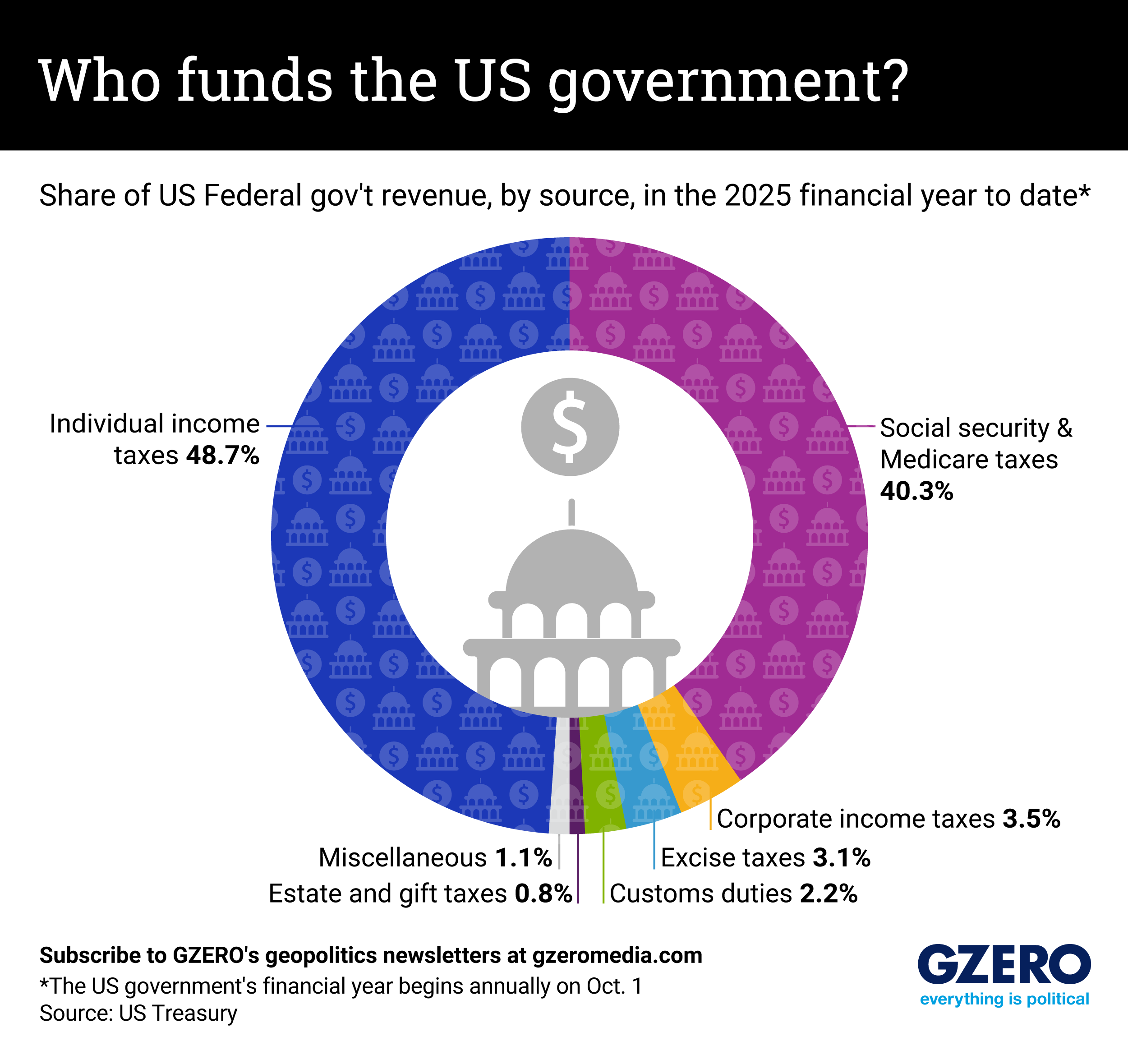The US government currently raises about $5 trillion a year in revenue. That plus another $2 trillion in debt are what make up the nearly $7 trillion that Uncle Sam spends annually.
But where does that revenue actually come from? Here’s a look at the breakdown.
Bear in mind, as you look at this, that incoming US president Donald Trump has suggested he wants to replace the income tax with his new tariffs. Would that be possible?
It’s true that until the income tax was implemented in the early 20th century, tariffs provided the lion’s share of US government revenue. But that was a time before social security, medicare, or a modern military when the government spent barely $500,000 a year.
With Trump’s tariffs expected to raise, at best, about $300 billion per year, using them to replace income taxes would entail an unfathomably radical shrinking of the US federal government.
